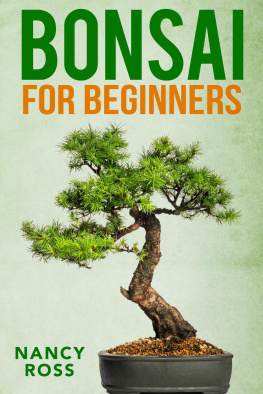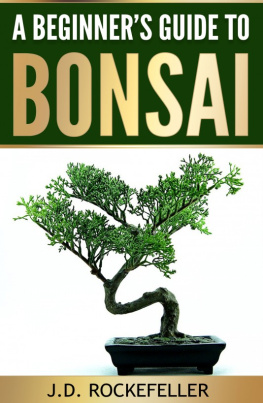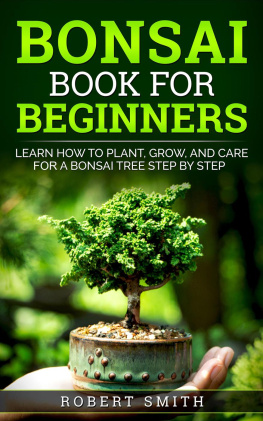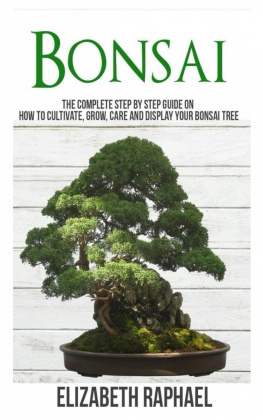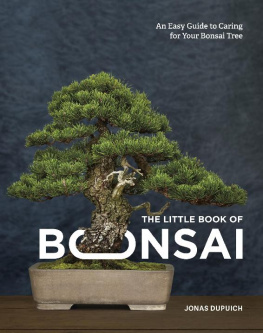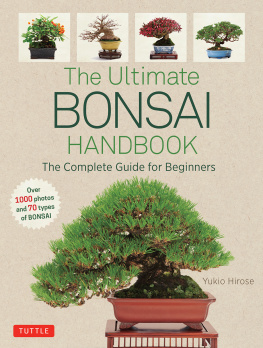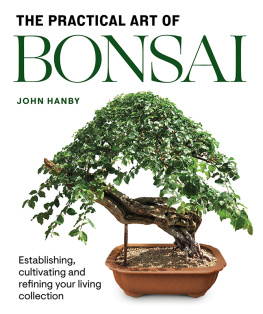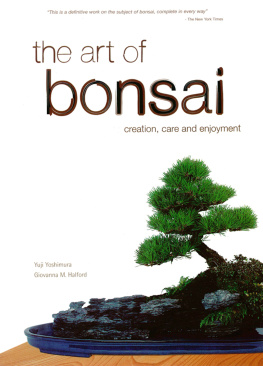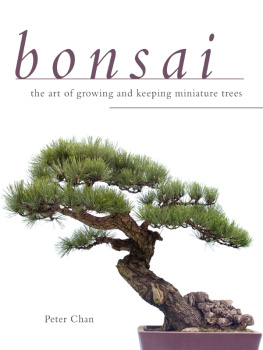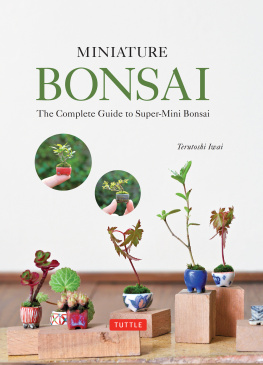This Fukien Tea tree ( Carmona Microphylla or Ehretia buxifolia ) makes an effective bonsai in the Root-in-Rock Style .
Simple containers and implements are employed in the practice of the complex and deeply satisfying art form that is bonsai .
This ancient painting from Japan shows that the art of bonsai has been practised there for many centuries .
A selection of the tools used in bonsai, ranging from ordinary household items to a few highly specialized implements .
CONTENTS
A birds-eye view of a particularly well-structured bonsai tree. This pleasing shape is created by paying careful attention to the branch placement .
FOREWORD
The essence of bonsai
A lthough bonsai is an ancient oriental art, it is just as relevant to todays Western culture as it was in the East, when it originated in China over 2000 years ago.
People everywhere have always had an affinity with nature, and people everywhere feel the urge to represent these things in the form of art. In painting, poetry, music and sculpture. In this high-tech era, this kind of empathy with our natural surroundings is even more important, helping us relax and unwind. What better way do this, and to pay homage to mother natures most magnificent creations, than through the venerable art of bonsai?
The principles of bonsai are simple to learn and very easy to apply. For example, we all keep plants in pots, on our balconies, patios and even in our living rooms; theres nothing new about that. We prune our shrubs, clip our hedges and fashion some plants into the recognizable shapes of birds or animals. Nothing new there either!
The only thing that makes bonsai different from any other form of horticulture is that it involves creating a miniature image of a larger tree, and keeping it that way, in a container that is shallower than usual. The only thing that makes it different from any other art form, is that the medium we work with is alive and constantly changing.
Bonsai involves no magic potions, no special philosophy, and no degree in oriental studies. All it requires is a woody plant, a pot, a handful of basic tools, and a few years patience. Think you can manage that? Of course!
When David Prescott first came to me to study bonsai, I recognized at once his innate talent and burning passion for the art. Since then, he has studied with many of Europes leading experts and has become a master in his own right. His down-to-earth approach and his unfailing sympathy with the worries and uncertainties of the absolute beginner have made him a very popular teacher.
Here, he not only brings to you his deep knowledge of the subject, but does so in a way that makes bonsai seem so easy that you wonder why people make such a fuss.
Read this book, try out the techniques for yourself (if you kill a few trees, dont worry weve all done that!). Above all, have fun thats what bonsai is all about.
Sincerely,
Colin Lewis
INTRODUCTION
What is bonsai?
B onsai, literally translated, means tree-in-a-pot. This, however, is a broad definition which needs qualification. Perhaps it would be easier to explain what bonsai is not. A bonsai is neither a dwarf variety, nor is it a tree miniaturized by means of magic. Keeping the roots confined in a pot assists with mobility and allows for a unified composition but that is not what keeps a bonsai small and beautiful, either. The size, shape and attractiveness of a bonsai is entirely dependent upon its owners dedication to its daily care and his or her taste and artistic ability.
Nobody knows when the idea first arose that one could shape trees in containers to mimic their full-sized counterparts. There is clear evidence that the Chinese were doing it over 2000 years ago. Paintings of that period depict shallow pots with trees and rocks, which look like landscapes in miniature. However, it was the Japanese who took up, refined and developed the practice.
Much of Japanese culture and art throughout history has come under the influence of the Chinese. The Japanese script even uses the same characters for the word bonsai as does the Chinese. But within the past few centuries the two cultures have moved further and further apart. In China, most bonsai, (pronounced punsai) or penjing include elements of landscape.
In full bloom, a beautiful bonsai azalea in the Shakan or Slanting Style. Azaleas are calcifuges so they will only thrive in a lime-free soil .
In this old Japanese painting, well-dressed ladies are depicted in an elegant garden setting. On the left of the garden room is a table on which a few bonsai trees are on display in porcelain pots. The bonsai echo the full-size tree in bloom outside, at the edge of the tranquil lake .
Bonsai trees are sometimes displayed in creative ways to mimic trees in their natural environment. This Japanese White Pine (Pinus parviflora), seemingly growing on a hill, is actually a 100-year-old miniature specimen .
The trees themselves may appear to imitate animals and those with bizarre, unnatural-looking shapes and exposed roots are often the most highly prized.
The Japanese have simplified the bonsai image, distilling it to its basic elements. They have refined both the artistic and horticultural aspects of bonsai culture to such an extent that they have set almost impossibly high standards for the rest of the world to follow. Certain classic styles have been defined, based on the attitudes of the trunks. The ideal positions of branches, the proportions of the trees, the shape of the trunks and the relationship between the plant and its container, have all been perfected by them.


